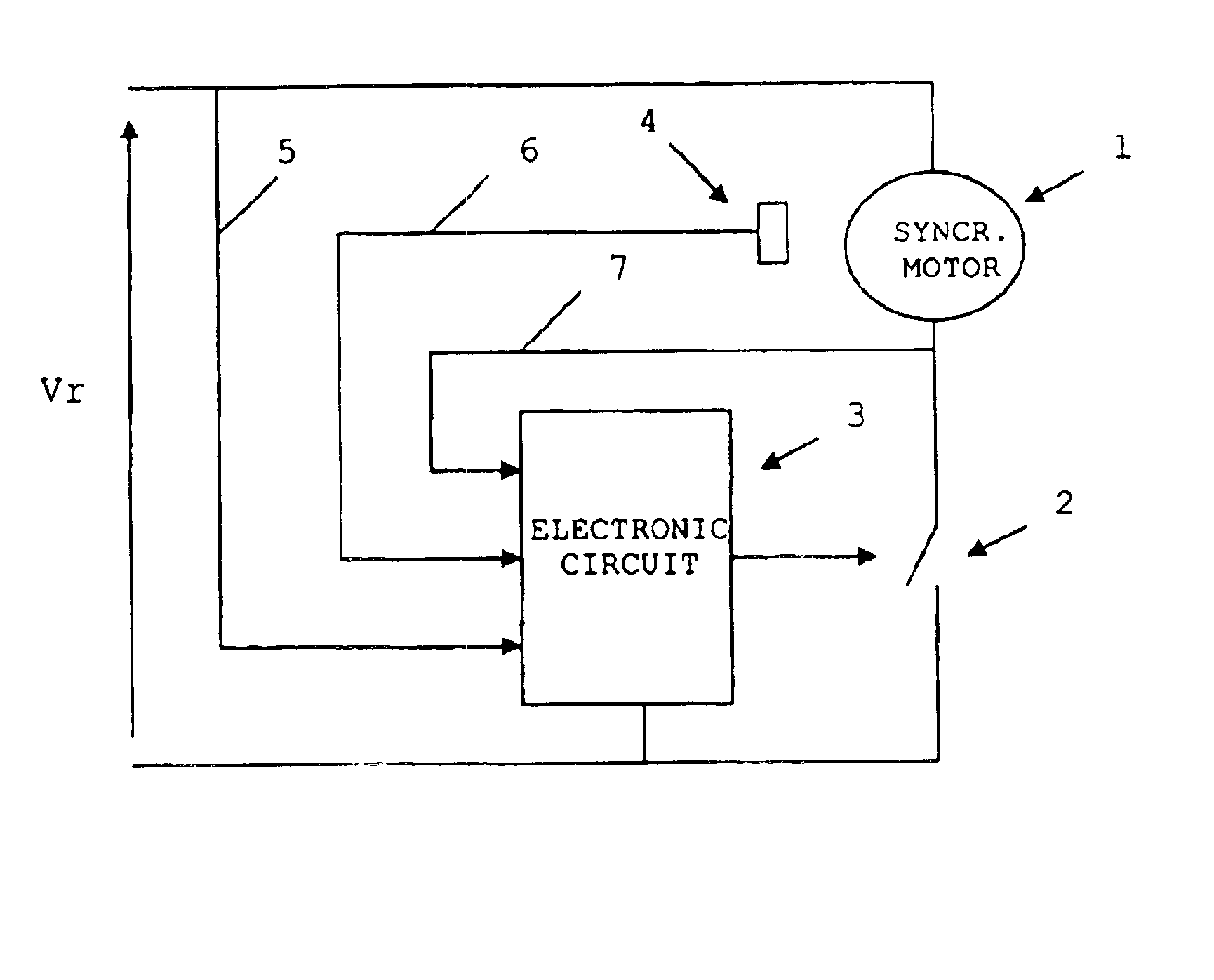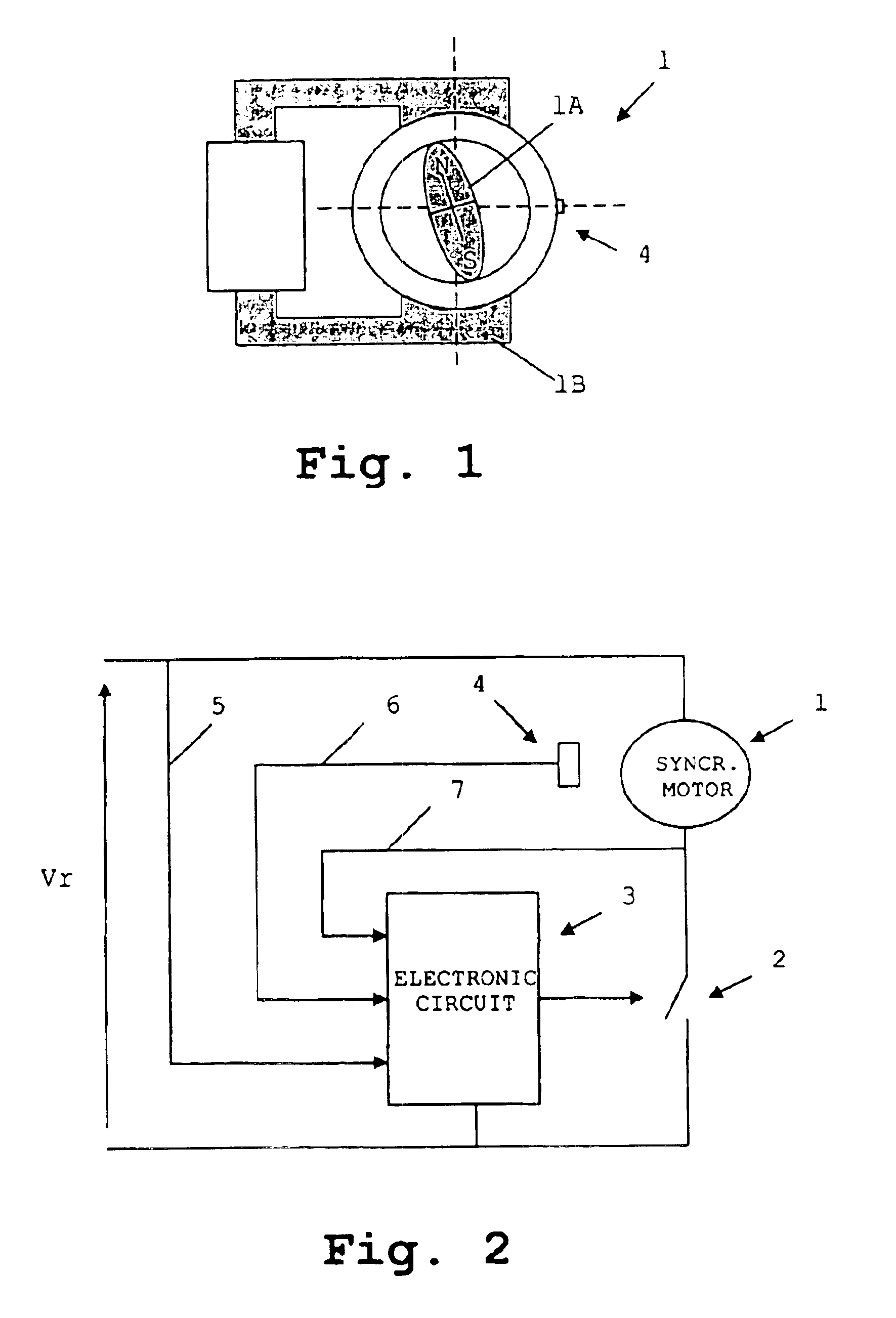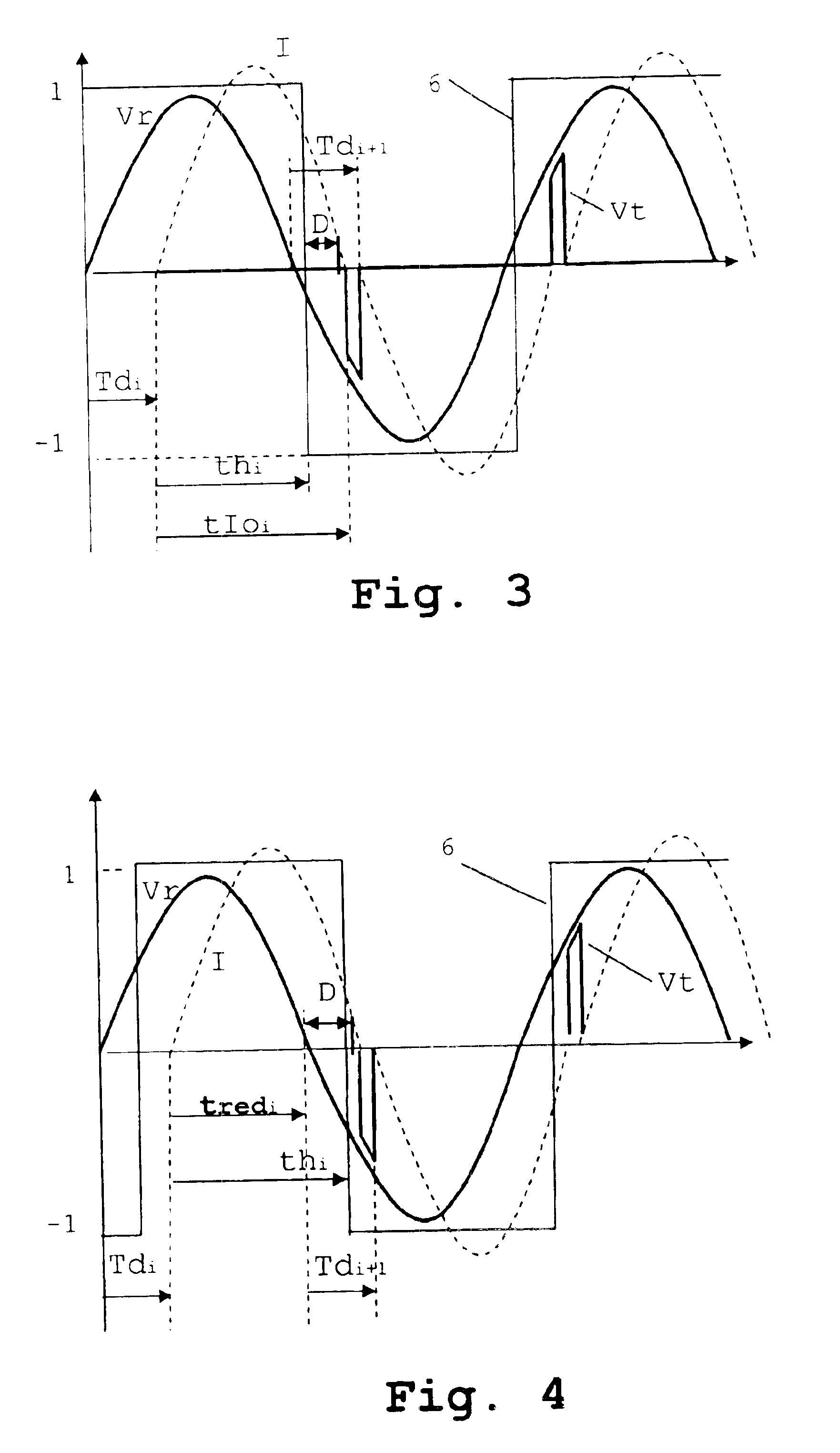Electronic device for controlling a synchronous motor with permanent-magnet rotor
a technology of magnetic rotor and electronic device, which is applied in the direction of electronic commutators, single motor speed/torque control, synchronous motor starters, etc., can solve the problems of unfavorable motor start, unfavorable motor start, and overheating of the motor
- Summary
- Abstract
- Description
- Claims
- Application Information
AI Technical Summary
Benefits of technology
Problems solved by technology
Method used
Image
Examples
first embodiment
[0018]FIG. 3 shows the variations in time of the mains voltage, the signal from the rotor position sensor and the voltage in the switch in the invention.
second embodiment
[0019]FIG. 4 shows the variations in time of the mains voltage, the signal from the rotor position sensor and the voltage in the switch in the invention.
DETAILED DISCLOSURE OF THE INVENTION
[0020]With reference to FIG. 1, the electronic device of the invention is applied to a permanent-magnet synchronous motor 1 with a rotor 1A and a stator 1B. Said motor 1 has two rotor poles and two stator poles, and is shown purely by way of an example.
[0021]With reference to FIG. 2, the electronic device for controlling said synchronous motor 1 comprises:[0022]an alternating voltage source at mains frequency providing a voltage Vr, connected in series with said synchronous motor 1,[0023]a static switch 2 connected in series with said synchronous motor 1 and comprising for example a triac, and[0024]an electronic circuit 3 which acts on said static switch 2.
[0025]Said electronic circuit 3 determines the timing for firing the static switch taking as reference the zero-crossing of the mains voltage V...
PUM
 Login to View More
Login to View More Abstract
Description
Claims
Application Information
 Login to View More
Login to View More - R&D
- Intellectual Property
- Life Sciences
- Materials
- Tech Scout
- Unparalleled Data Quality
- Higher Quality Content
- 60% Fewer Hallucinations
Browse by: Latest US Patents, China's latest patents, Technical Efficacy Thesaurus, Application Domain, Technology Topic, Popular Technical Reports.
© 2025 PatSnap. All rights reserved.Legal|Privacy policy|Modern Slavery Act Transparency Statement|Sitemap|About US| Contact US: help@patsnap.com



